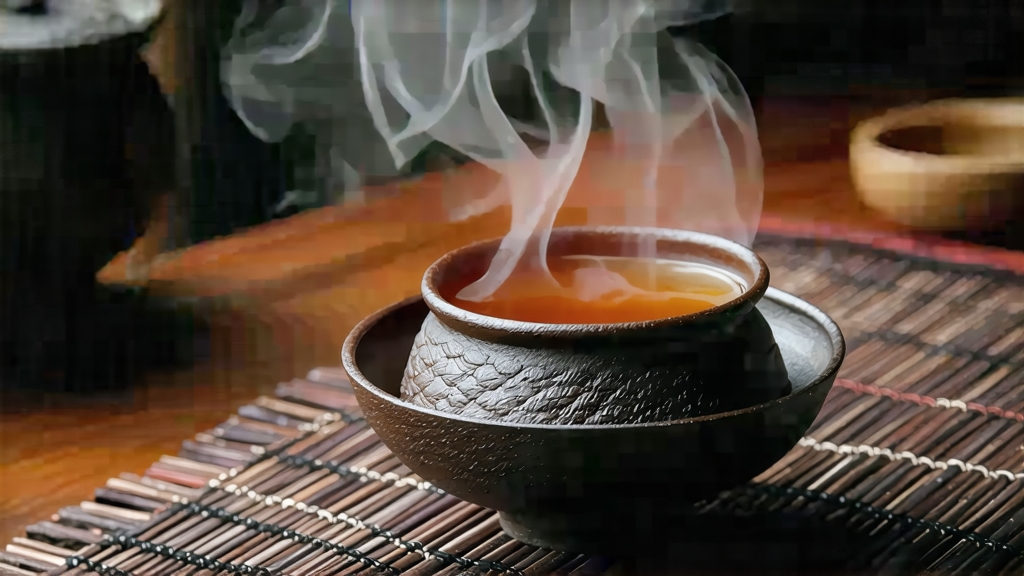
Tucked away in the southern folds of China’s Guangxi Zhuang Autonomous Region, Liu Bao Hei Cha—literally “Six Forts Dark Tea”—has spent four centuries quietly perfecting the art of microbial alchemy. While Pu-erh has become the global shorthand for aged, fermented tea, Liu Bao remains the connoisseur’s whispered secret, a tea that once fueled the caravans of the legendary Tea-Horse Road and still carries the scent of misty sub-tropical forests in every leaf. To understand Liu Bao is to step into a humid cave where time, yeast and human patience conspire to turn green into velvet, and to taste history in a cup the color of burnt honey.
Historical footprints
The story begins during the Qing dynasty’s Kangxi reign (1662-1722), when the imperial court designated Wuzhou prefecture as the official collection point for Guangxi tribute tea. Caravans departing Wuzhou followed the Xun River westward, then climbed the Yungui Plateau toward Kunming and Lhasa. Compressed into 37-kilogram bamboo baskets, Liu Bao bricks served as both currency and sustenance, valued by Tibetan monks for its warming properties and by horse traders for its immunity to spoilage during months on the trail. In 1886 the British Consulate in Wuzhou recorded 1,100 tonnes of “black basket tea” exported via Hong Kong to Southeast Asia, where it became the breakfast drink of tin-mine coolies who credited it with dissolving the greasy tin-ore dust in their lungs. Thus Liu Bao travelled farther than its more famous cousin Pu-erh, yet remained anonymous, hidden inside the belly of bamboo.
Terroir and leaf
Liu Bao is made from a cultivar group locally called Zhong Ye Zhong (middle-leaf medium bush), thriving between 200–600 m elevation on lateritic red soils derived from granite weathering. The climate is subtropical monsoon: average humidity 82 %, annual rainfall 1,800 mm, and a fog belt that lingers until noon for two hundred days a year. These conditions foster a leaf chemistry unusually rich in methyl salicylate, the compound responsible for Liu Bao’s signature “betel-nut” aroma. Farmers pluck one bud with three to four leaves in late April, after the spring rains have swollen the veins but before the fibres toughen. The ideal leaf is matte on the underside, feels like suede between the fingers, and exudes a faint scent of raw nutmeg when bruised.
Crafting the darkness
Unlike the pile-fermentation of Pu-erh, Liu Bao undergoes “double wet piling” unique to Guangxi. The first stage, sha qing (kill-green), is brief: leaves are pan-fired at 280 °C for three minutes to deactivate polyphenol oxidase while preserving surface microbes. Immediately they are rolled for 45 minutes under 28 rpm barrels to rupture 65 % of cell walls without breaking the cuticle. The bruised leaf is then heaped 70 cm deep in bamboo-lined pits dug into the earth floor of the factory. Hot water (45 °C) is sprinkled to bring total moisture to 38 %; the pile is covered with jute sacks and left for 10–12 hours. During this first wet piling, thermophilic Bacillus subtilis and Aspergillus niger dominate, pushing the leaf temperature to 55 °C and dropping the pH from 6.1 to 4.7. The pile is turned every two hours to oxygenate, creating the first layer of Liu Bao’s earthy signature.
After primary drying on bamboo trays above wood-charcoal braziers, the leaf is re-wetted to 28 % moisture and subjected to a second 18-hour piling inside rectangular cement chambers. Here, Eurotium cristatum—the same “golden flower” mold coveted in Hunan Fu brick—blooms, visible as yellow freckles on the leaf margins. The double piling reduces catechin content by 42 % and converts 12 % of residual sugars into novel furanones, yielding the tea’s characteristic dried-longan sweetness. Finally the leaf is steamed, compressed into 500 g baskets woven from fresh bamboo strips, and transferred to natural caves in the Daqingshan range where relative humidity hovers at 88 % and temperature at 22 °C year-round. Inside these caves Liu Bao ages for